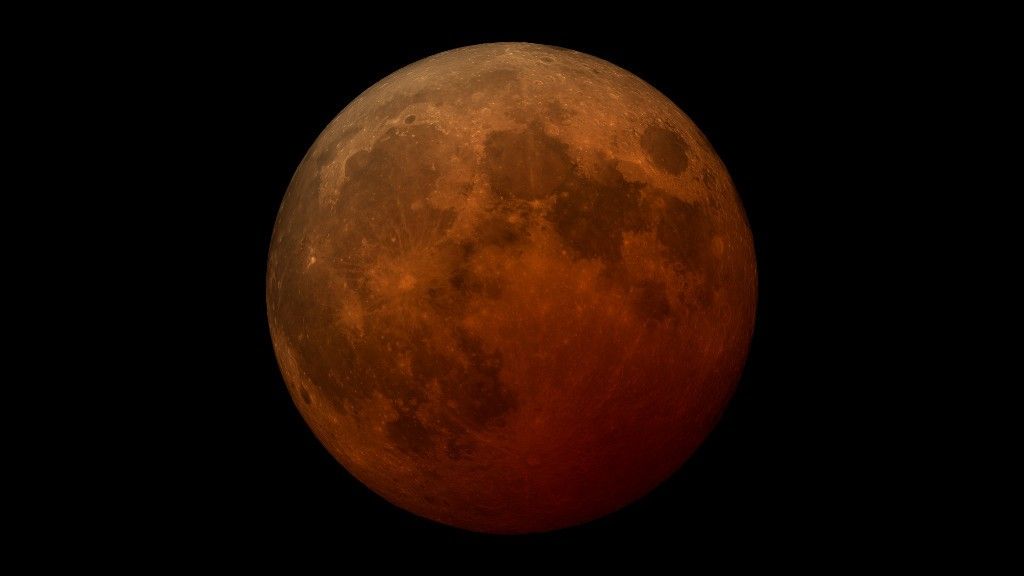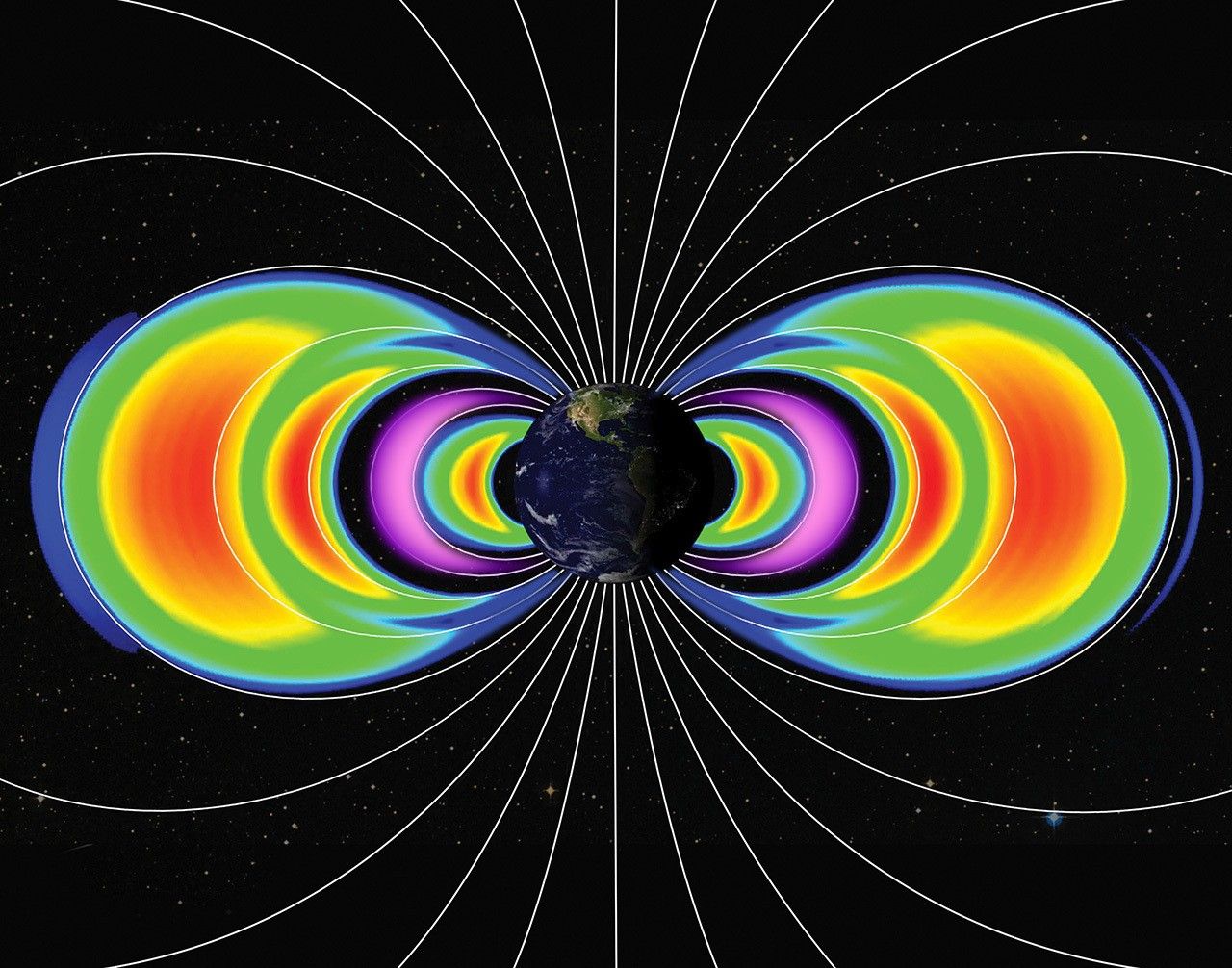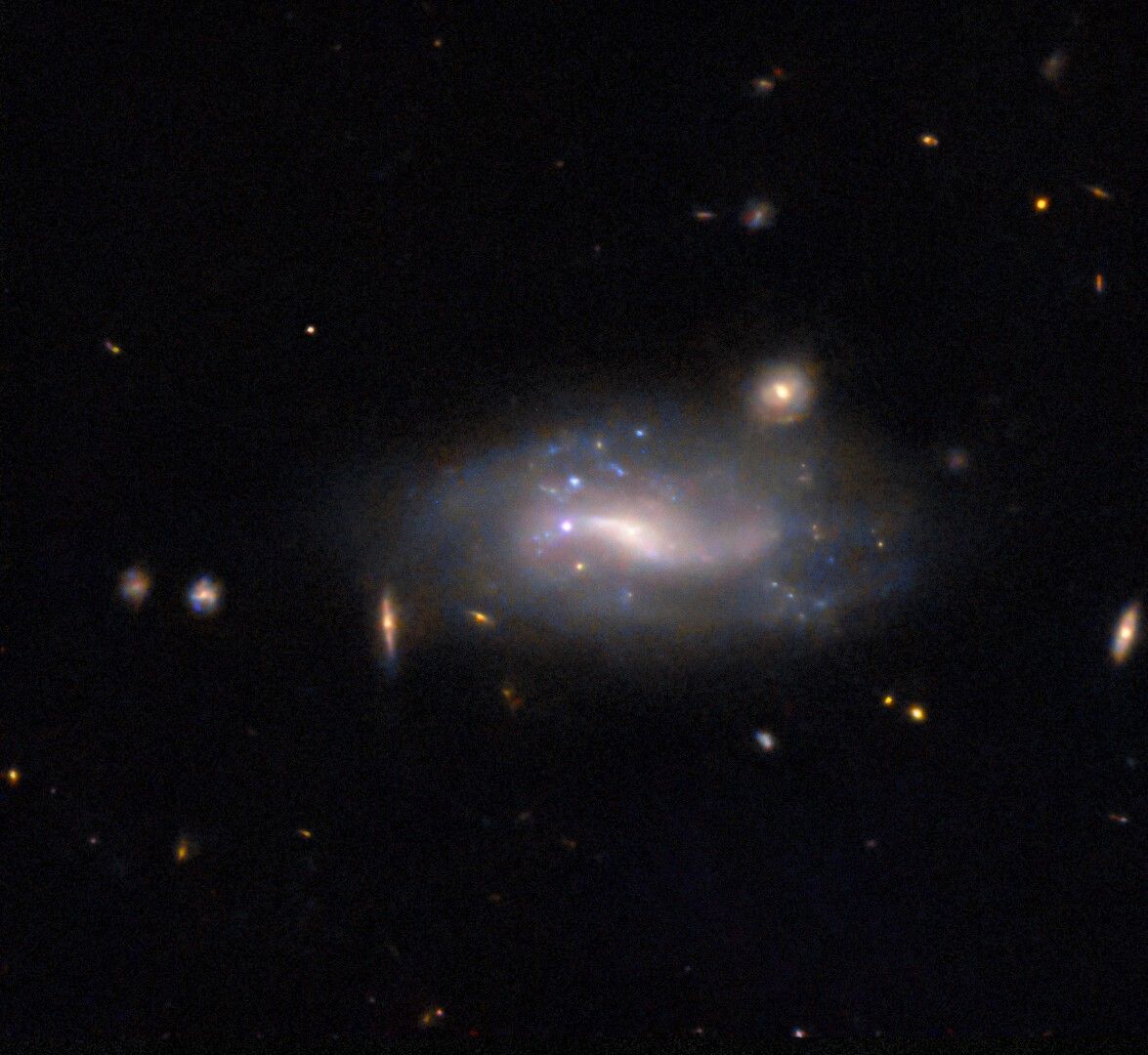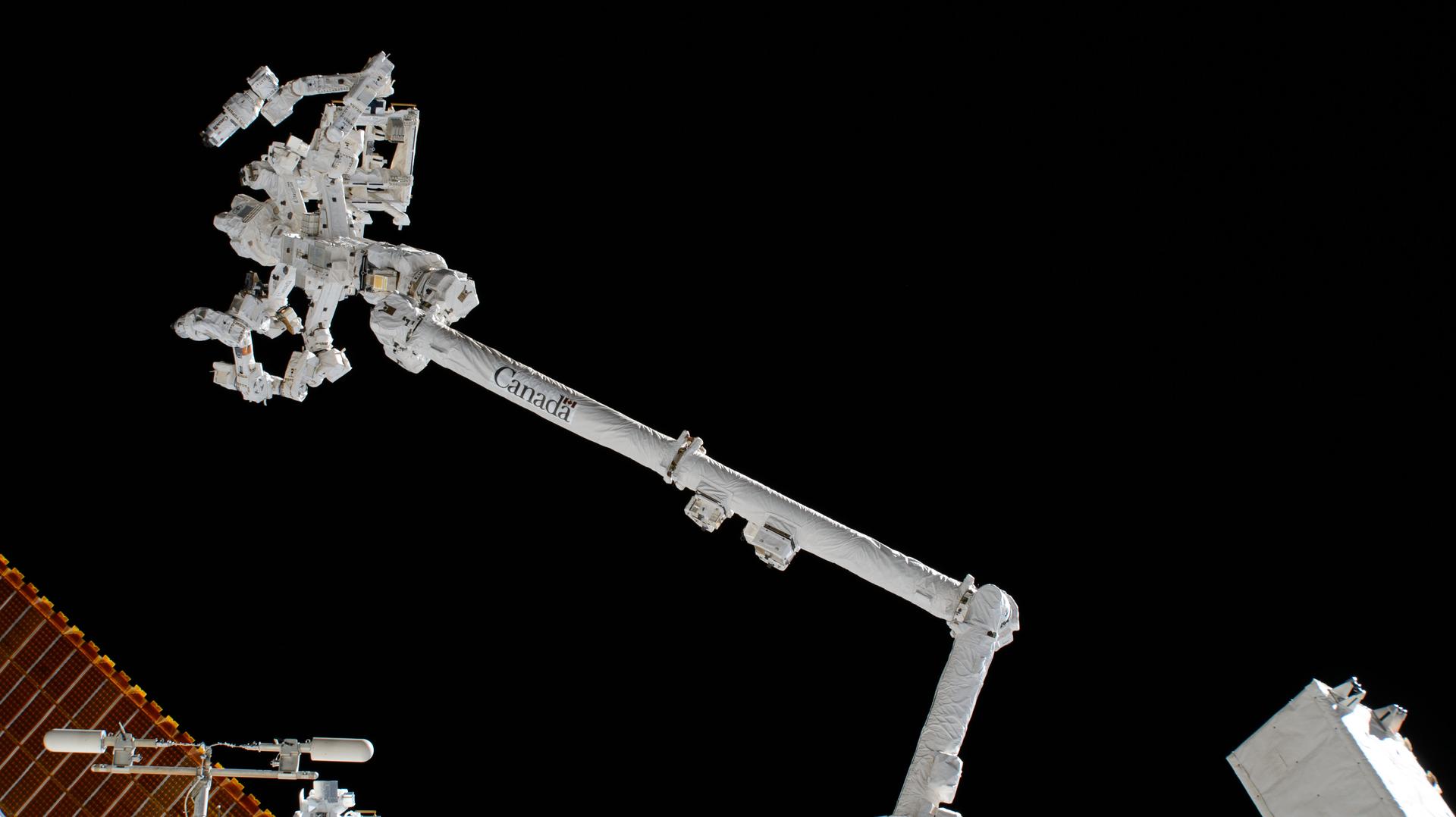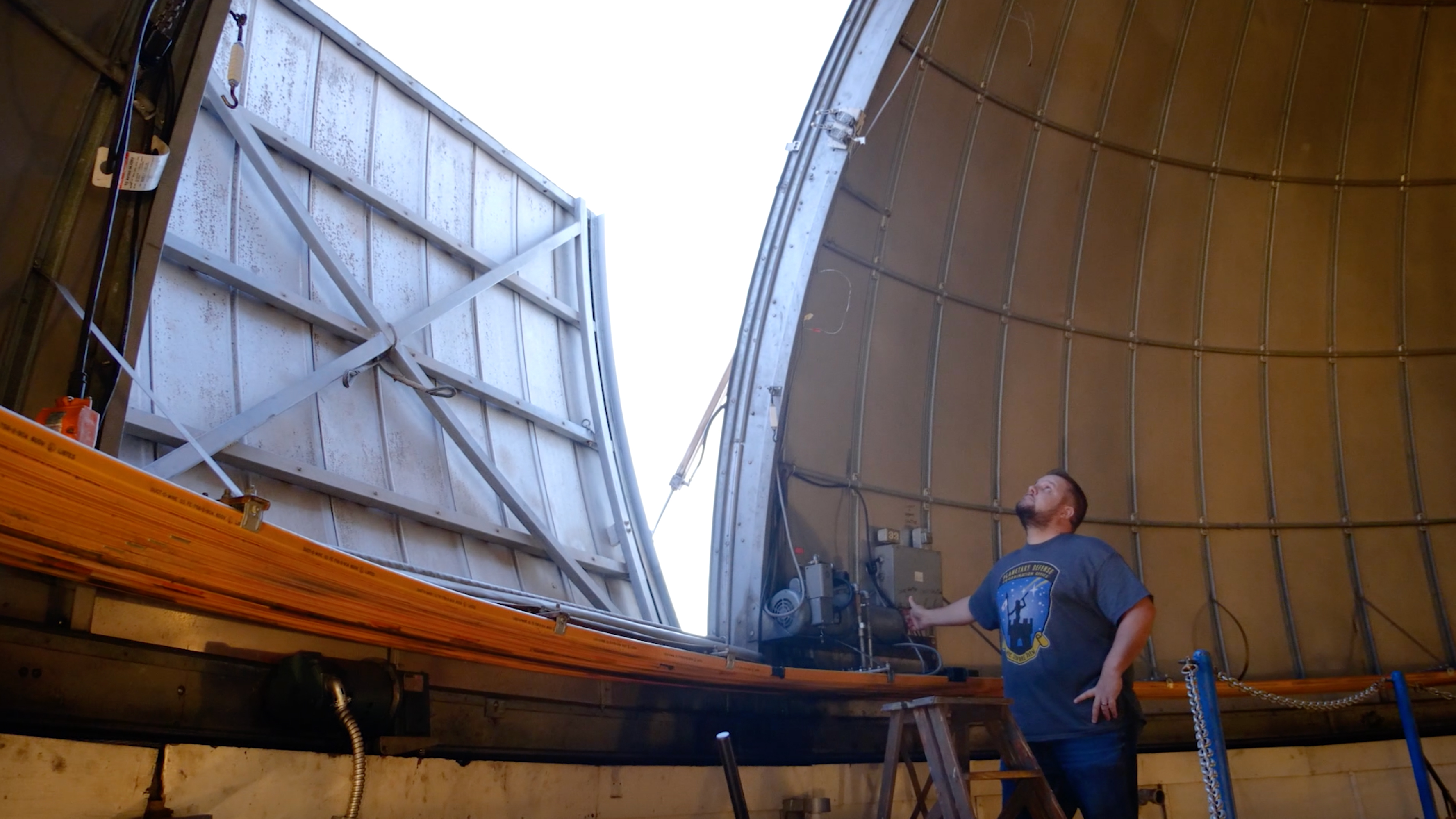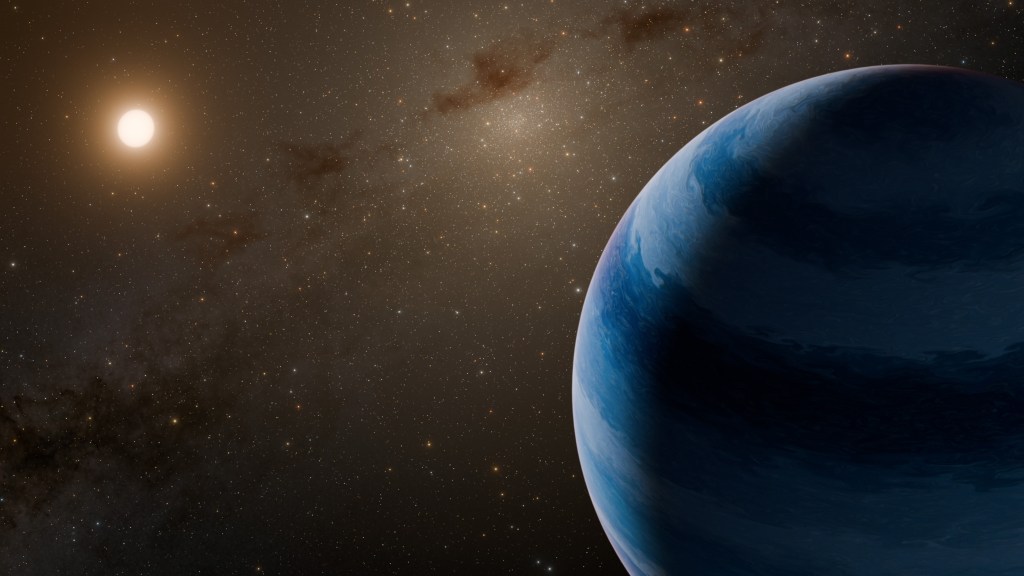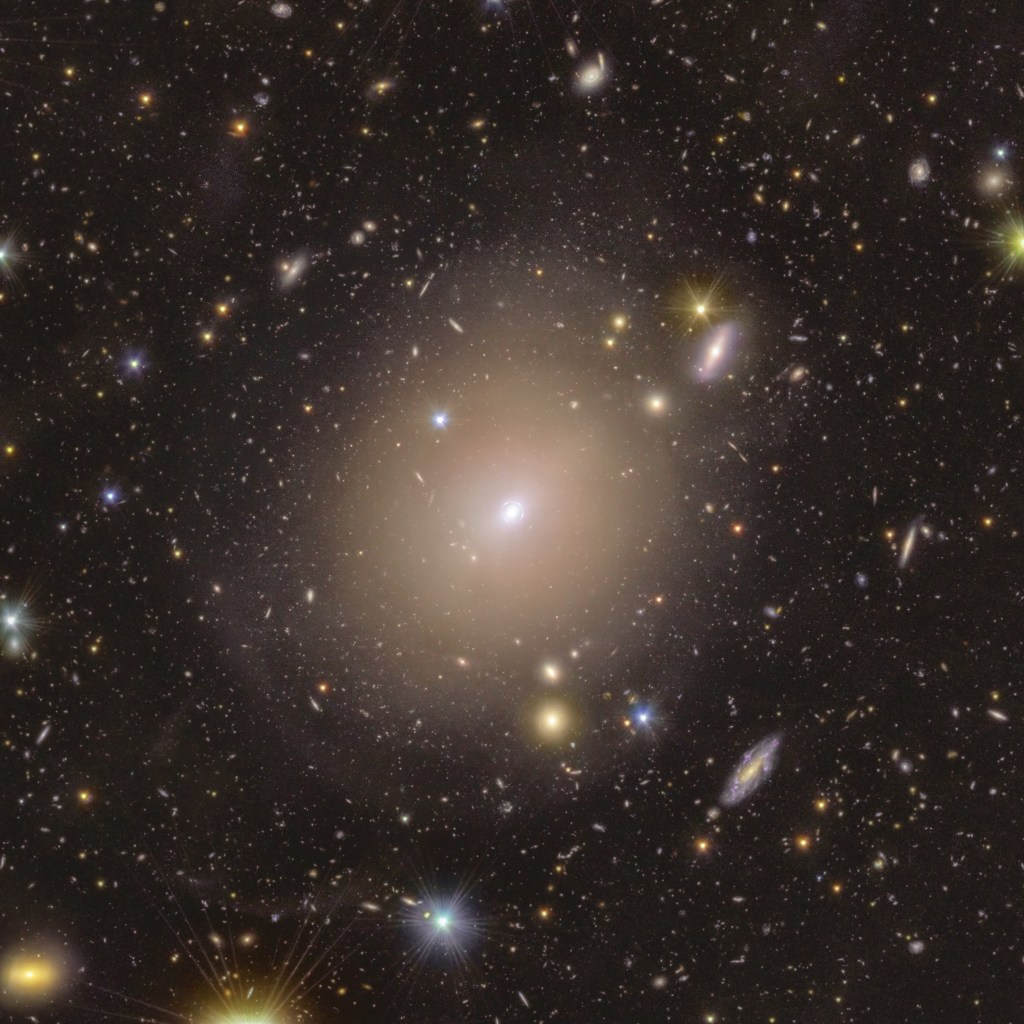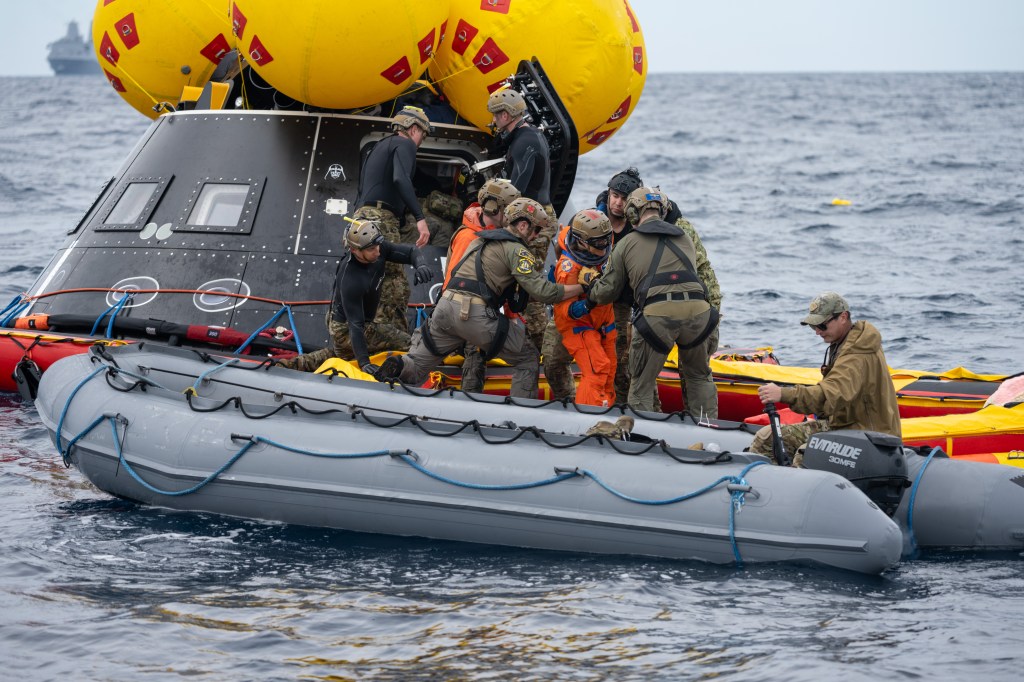As we celebrate the 20th anniversary of permanent human occupancy of the International Space Station (ISS) this year, it is fitting to remember another significant event that happened five years earlier. The Phase 1 Program of ISS, also known as the Shuttle-Mir Program, brought the United States and Russia together in the first cooperative human space flight endeavor since the historic Apollo-Soyuz Test Project (ASTP) of the mid-1970s, and served as a precursor to joint operations aboard ISS. Just shy of the 20th anniversary of the ASTP joint mission, the crews of the Space Shuttle Atlantis and the Space Station Mir made history of their own by completing the first docking of the Shuttle-Mir Program.
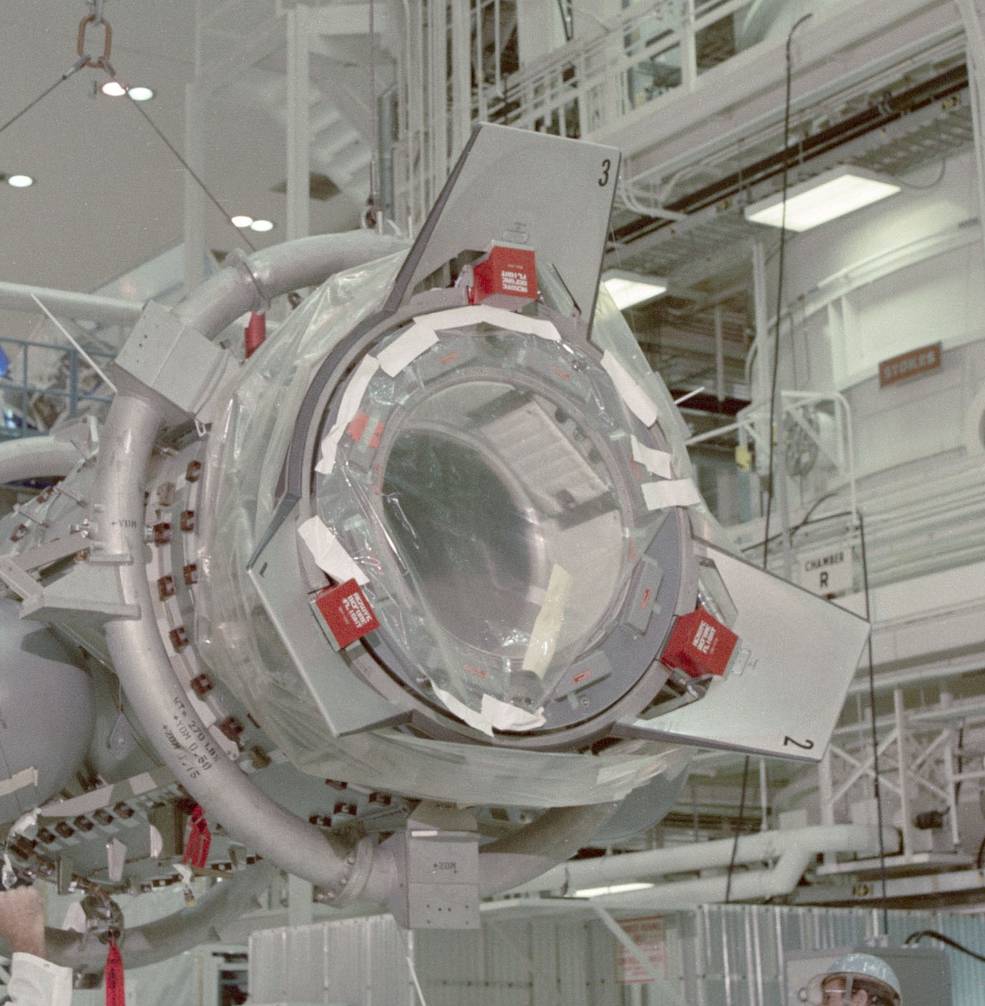
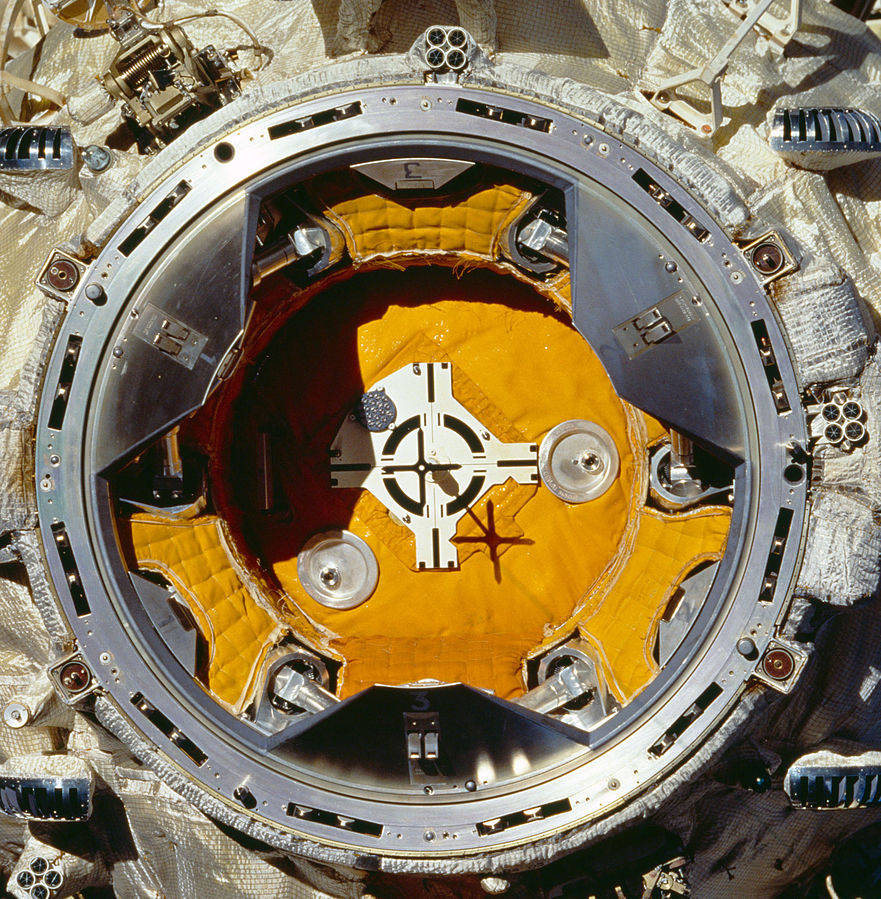
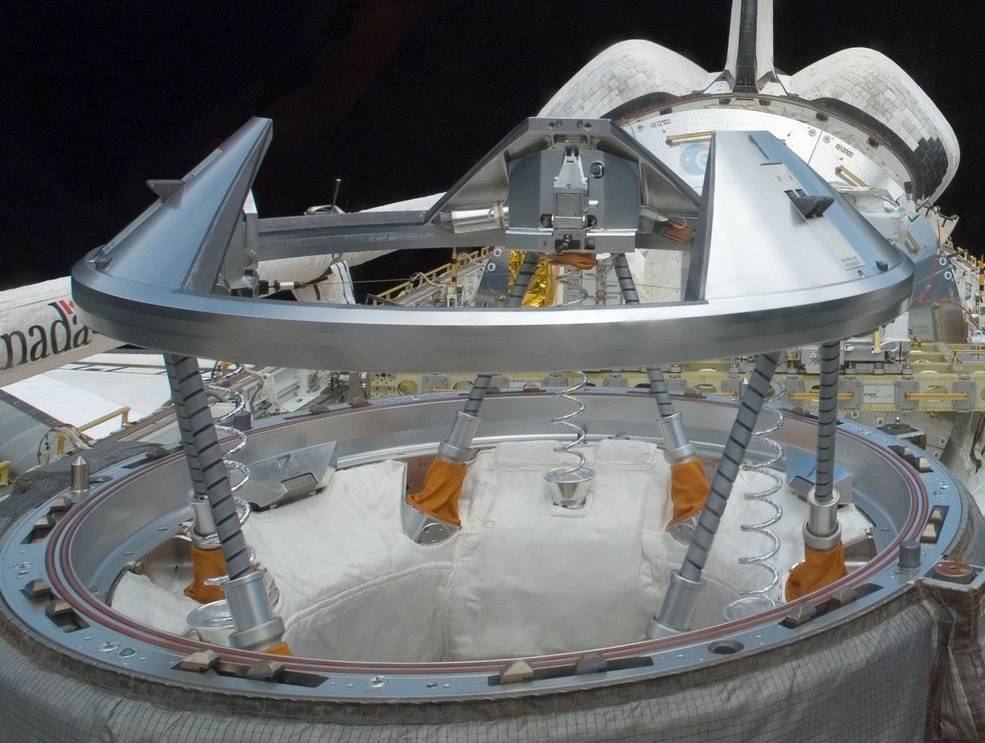
Left: The APAS-75 docking system installed on the Docking Module for ASTP.
Middle: The APAS-89 installed on Mir’s Kristall module.
Right: The APAS-95 installed on the Shuttle’s ODS.
The Androgynous Peripheral Assembly System (APAS) used to physically link the Shuttle with Mir also historically linked the three programs. Designed and built at NPO-Energia (now RKK-Energia) in the Moscow suburb of Kaliningrad (now Korolev), the APAS-75 linked the Apollo and Soyuz spacecraft. Energia engineers equipped Mir’s Kristall module with an updated APAS-89 docking system, initially designed for docking of the Soviet Buran space shuttle. For the Shuttle-Mir docking, Energia engineers built the APAS-95 system, virtually identical to its immediate predecessor, and shipped it to the Rockwell International plant in Downey, California, where engineers installed it on the Orbiter Docking System (ODS) that they then shipped to the Kennedy Space Center (KSC) where workers installed it in the payload bay of Atlantis. The Shuttle continued to use the APAS-95 system for dockings with ISS.
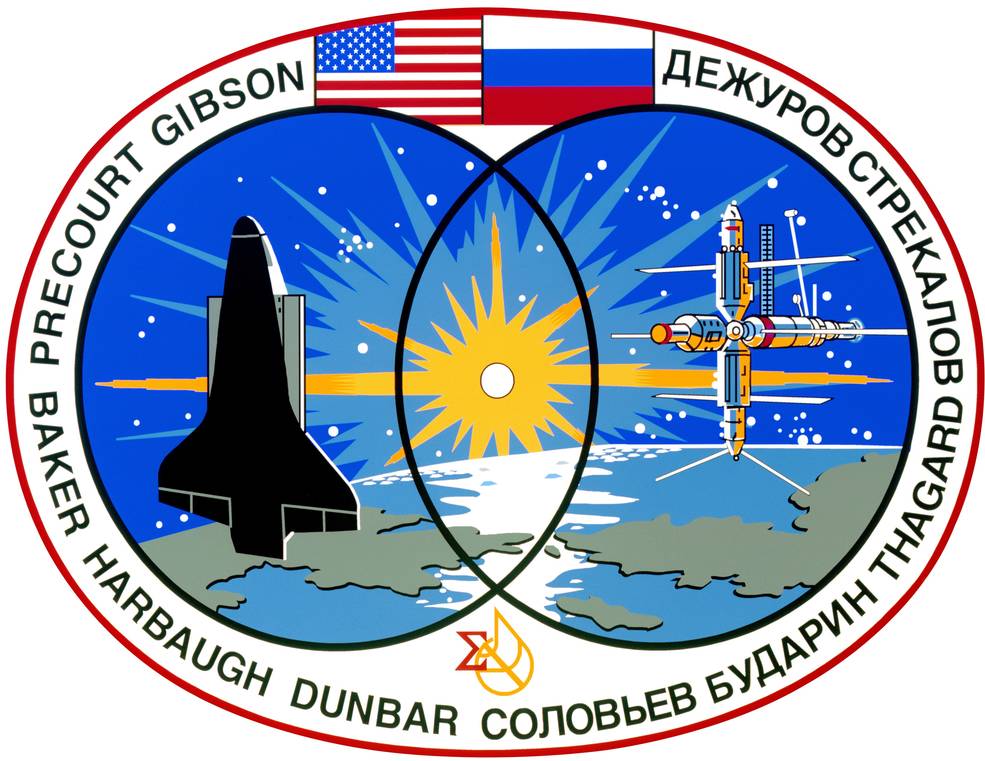
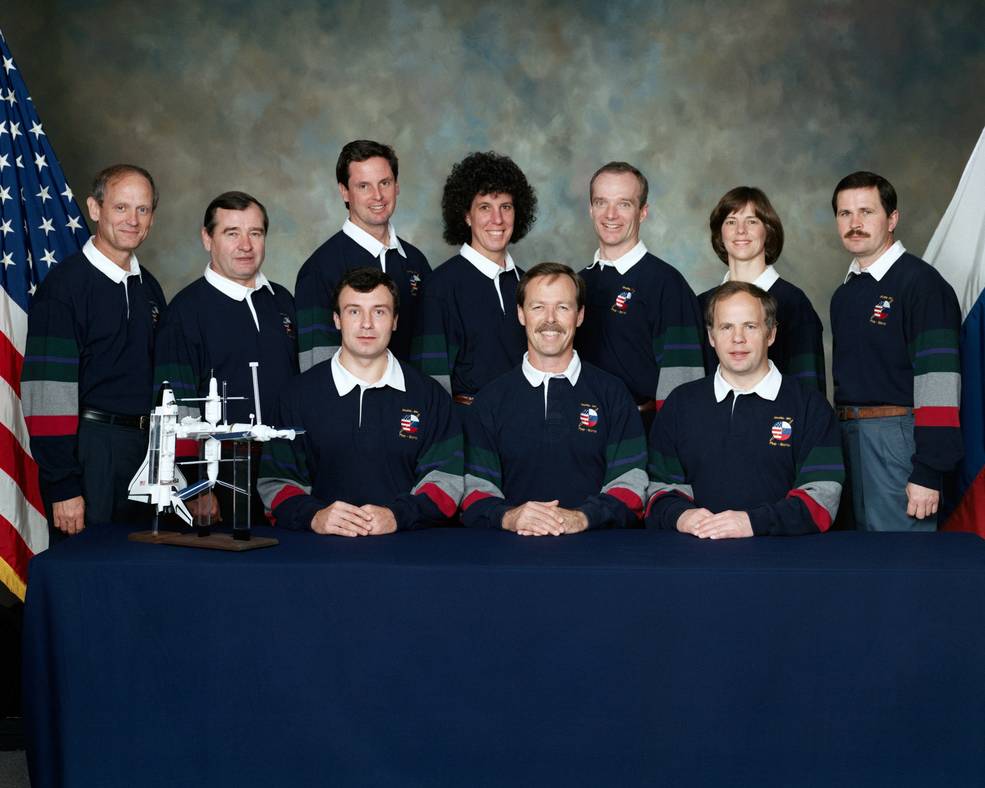
Left: STS-71 crew patch. Right: STS-71 crew photo (in front, left to right)
Dezhurov, Gibson and Solovyev; (in back, left to right) Thagard, Strekalov,
Harbaugh, Baker, Precourt, Dunbar and Budarin.
The initial Shuttle-Mir agreement called for a flight of a Russian cosmonaut aboard a Space Shuttle, a long-duration flight of an American astronaut aboard Mir, and the docking of a Space Shuttle with Mir. Cosmonaut Sergey K. Krikalev fulfilled the first goal when he flew as a crewmember aboard STS-60 in February 1994. To fulfill the second goal, astronaut Norman E. Thagard began his long-duration flight aboard Mir when he launched aboard a Soyuz spacecraft on March 14, 1995, with Russian crewmates Vladimir N. Dezhurov and Gennadi M. Strekalov, docking with the station two days later. As the Mir-18 crew, the trio conducted experiments aboard Mir for more than two months when the Spektr research module arrived on June 1 carrying 1,553 pounds of additional science equipment. The stage was set for the arrival of the first Space Shuttle.
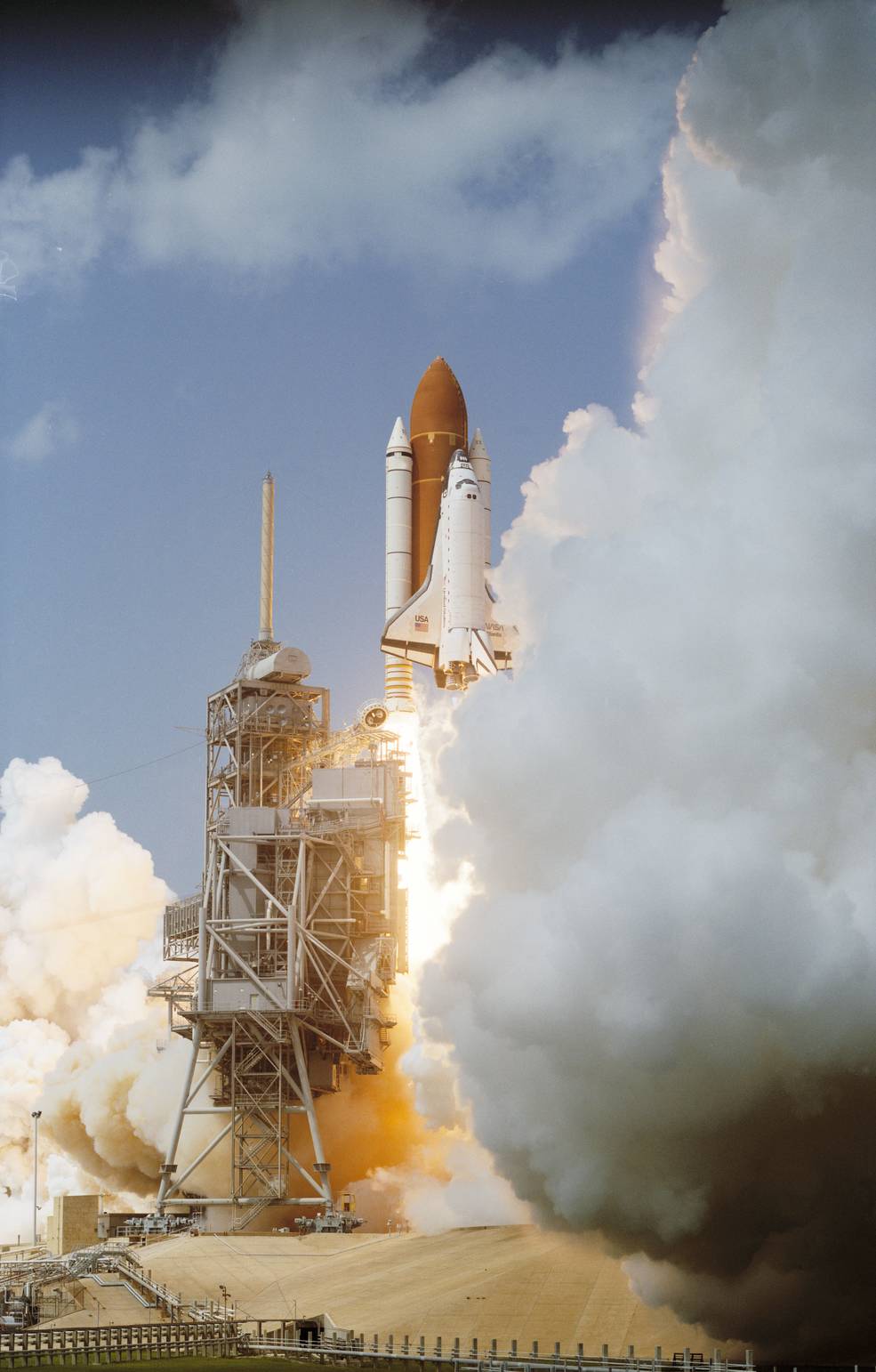
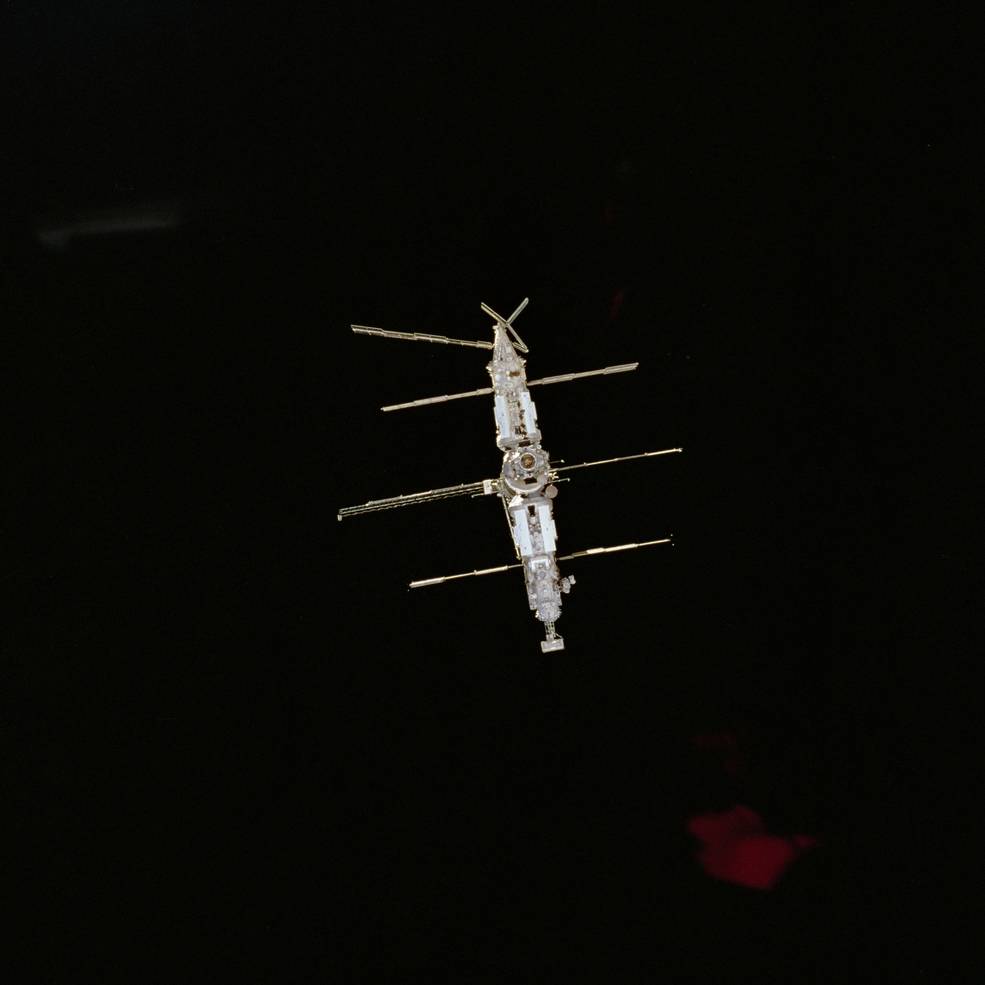
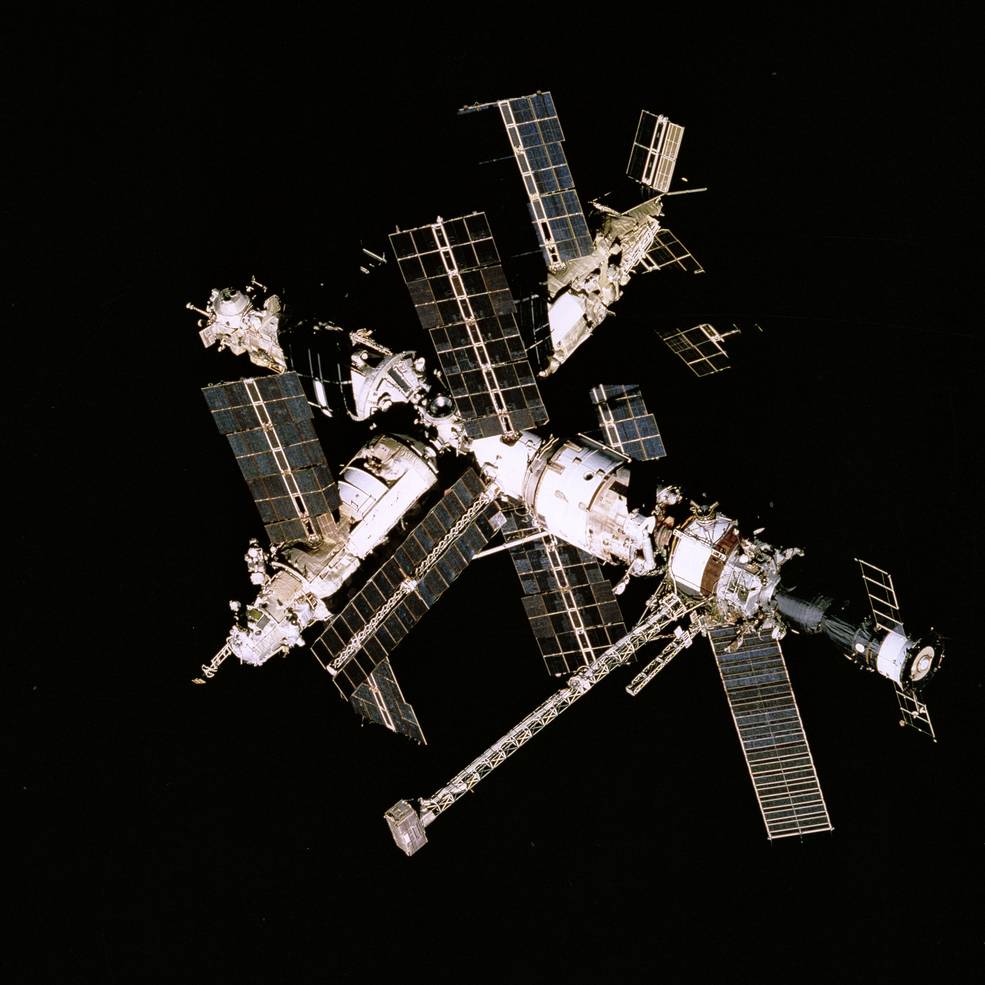
Left: Launch of Atlantis on Shuttle mission STS-71. Middle: Distant view of Mir from Atlantis
during the rendezvous and docking maneuver. Right: View of Mir from Atlantis during the fly
around prior to the historic docking.
Atlantis launched on June 27, 1995, on the STS-71 mission to carry out the third goal, the historic first Shuttle docking with Mir. Aboard Atlantis were Commander Robert L. “Hoot” Gibson, Pilot Charles J. Precourt, and Mission Specialists Ellen L. Baker, Gregory J. Harbaugh, Bonnie J. Dunbar, Anatoli Y. Solovyev, and Nikolai M. Budarin. After docking, Solovyev and Budarin would remain aboard the station as the Mir-19 crew, while Dezhurov, Strekalov, and Thagard would return to Earth aboard Atlantis, completing the first crew exchange in the Space Shuttle program. In its payload bay, Atlantis carried a Spacelab module outfitted with equipment to conduct biomedical investigations on the returning crewmembers. Two days after launch, Atlantis began its approach to Mir, a procedure rehearsed earlier in the year during STS-63, the Shuttle-Mir rendezvous (or near-Mir) mission. Gibson steered Atlantis to a smooth docking at Mir’s Kristall module as the two spacecraft flew 250 miles above the Lake Baikal region of eastern Russia, forming the world’s heaviest spacecraft up to that time – nearly half a million pounds.
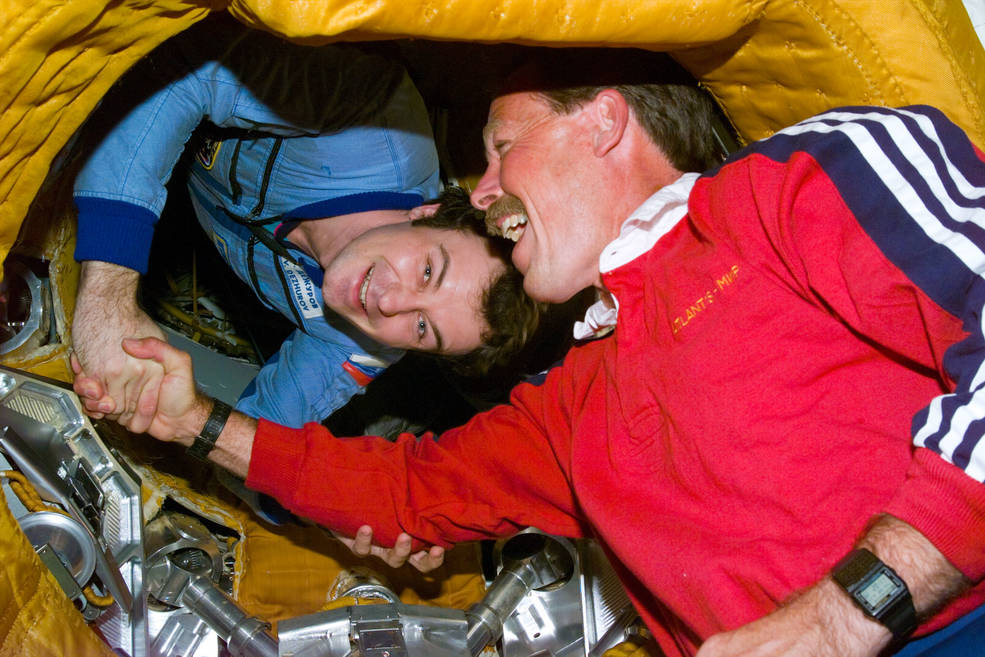
The historic handshake between Mir Commander
Dezhurov (left) and Shuttle Commander Gibson.
After equalizing the pressures between the two docked spacecraft and opening the hatches between them, Gibson and Dezhurov shook hands as they met at the threshold, the photograph of the event highly reminiscent of the famous ASTP handshake in 1975. The Shuttle crewmembers floated single-file through the Kristall module and congregated for a welcome ceremony in Mir’s Base Block, marking the first time that 10 people occupied a single spacecraft. The formalities concluded, the crewmembers settled down to work. The Mir-19 cosmonauts transferred their individualized crew couches from the Shuttle to the Soyuz while the Mir-18 crewmembers joined the Shuttle crew and began a series of experiments in the Spacelab module to determine how their bodies reacted to more than three months of weightlessness. Over the next five days, the medical studies continued while the crewmembers transferred items between the two vehicles. Thagard transferred the samples collected during his flight aboard Mir into freezers in the Spacelab for return to Earth and analysis by scientists. Items transferred from the Shuttle to Mir included a protein crystallization experiment and tools to help free a partially jammed solar array on the Spektr module.
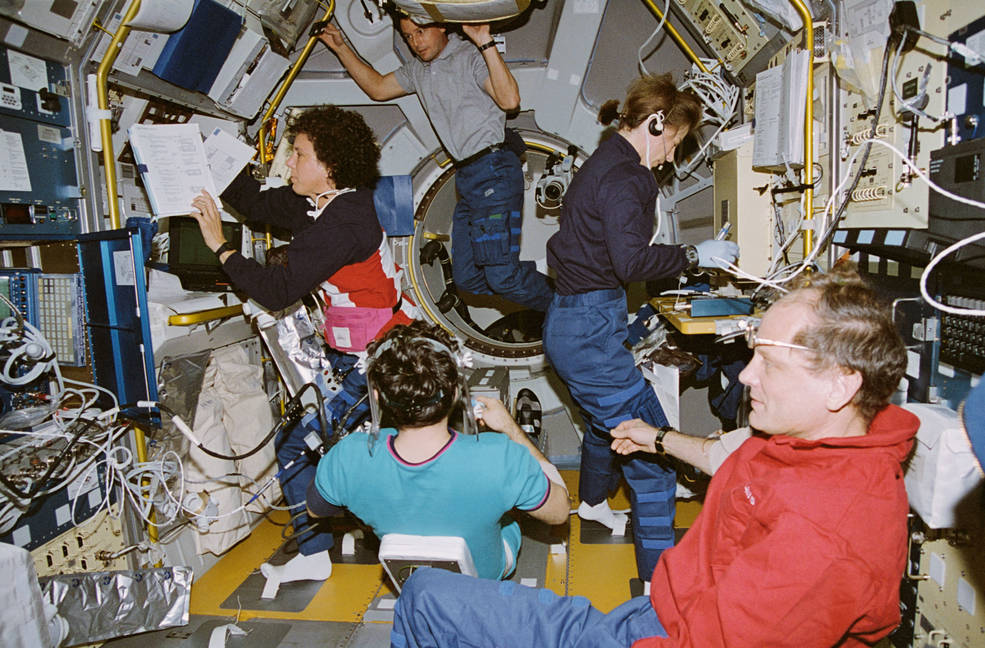

Left: Conducting science experiments inside the Spacelab module
(clockwise from top) Harbaugh, Dunbar, Thagard, Dezhurov, and Baker.
Right: All ten crewmembers pose inside the Spacelab module (clockwise from top)
Dunbar, Solovyev, Dezhurov, Strekalov, Thagard, Harbaugh, Gibson, Precourt,
Budarin, and Baker.
After saying their goodbyes to the Mir-19 crew, with Precourt at the controls, Atlantis undocked from Mir on July 4 and completed a fly around of the station, with the crew taking photographs to document its condition. The Mir-19 crew had temporarily undocked their Soyuz spacecraft and backed away from Mir to capture the historic undocking in stunning images and video. Three days later, the STS-71 crew closed Atlantis’ payload bay doors, and put on their launch and entry suits. Unlike all previous Shuttle crews, the Mir-18 crew of Dezhurov, Strekalov, and Thagard strapped into recumbent seats to better redistribute the reentry g-loads on their bodies, deconditioned by their 115-day spaceflight. Gibson guided Atlantis to a smooth landing on the Shuttle Landing Facility at KSC, ending the historic first Shuttle-Mir docking mission. The Shuttle had finally achieved one of the purposes for which it was built, to transport crews and cargo between Earth and an orbiting space station. It is probably safe to assume that none of the original designers of the Space Shuttle in the 1970s would have expected that to be a Russian space station!
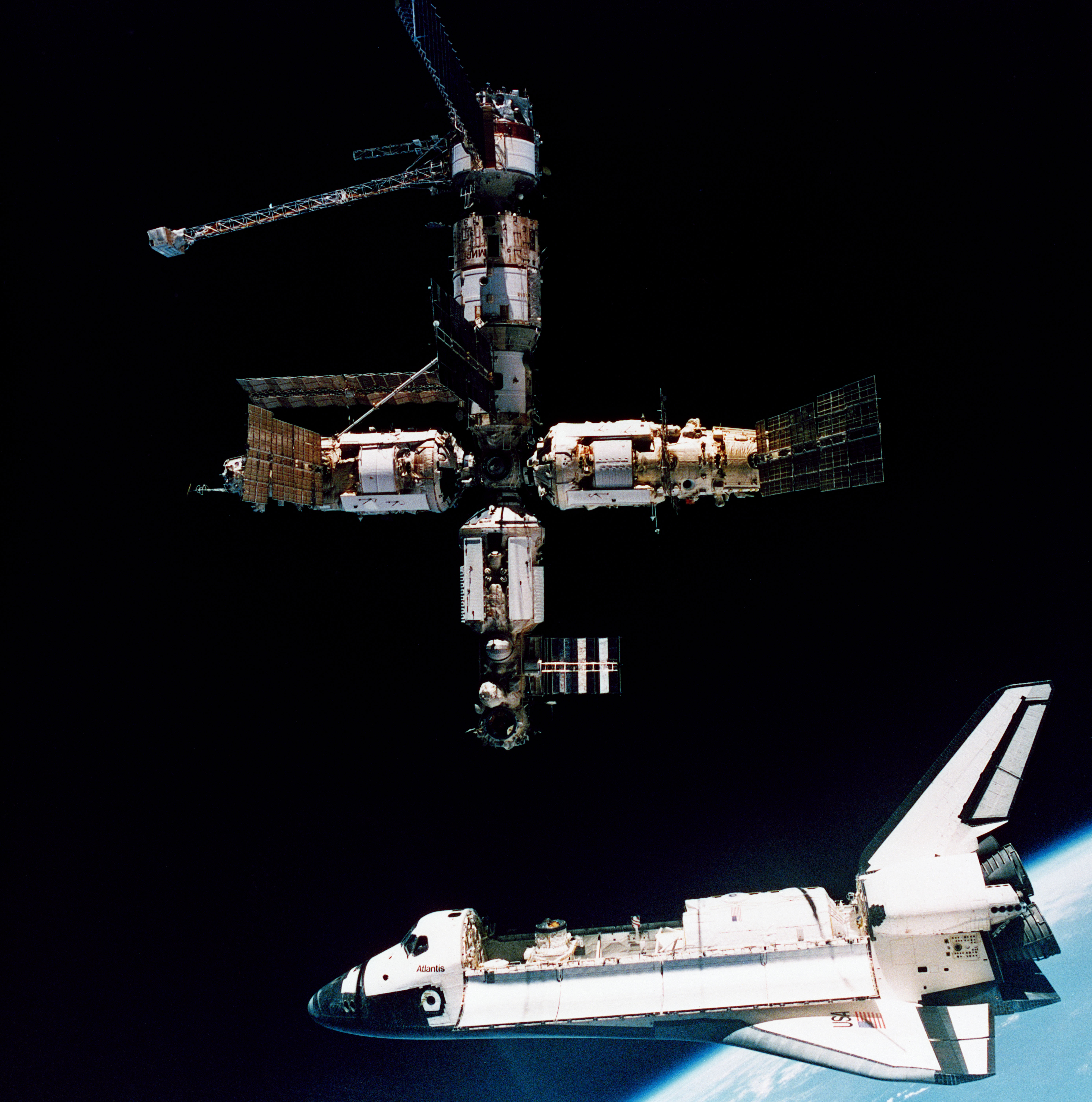
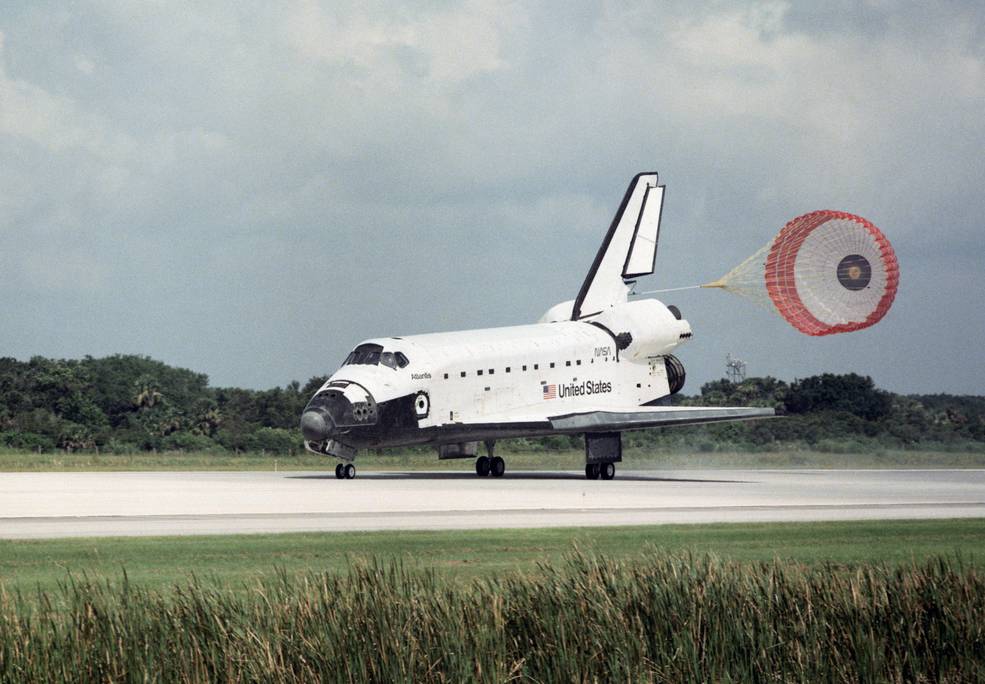
Left: Atlantis undocking from Mir, as seen from the Soyuz station-keeping
nearby. Right: Atlantis makes a successful landing at KSC.
Solovyev and Budarin continued their Mir-19 mission, and on July 14 conducted a 5-hour and 34-minute spacewalk to free the partially jammed solar array on the Spektr module using the tools they had brought aboard STS-71. This restored full power generation capability to the research module to enable future science experiments. Three days later, they relocated the Kristall module from its position at the forward docking port to its final location at one of the lateral ports, in preparation for the remaining eight Shuttle docking missions.
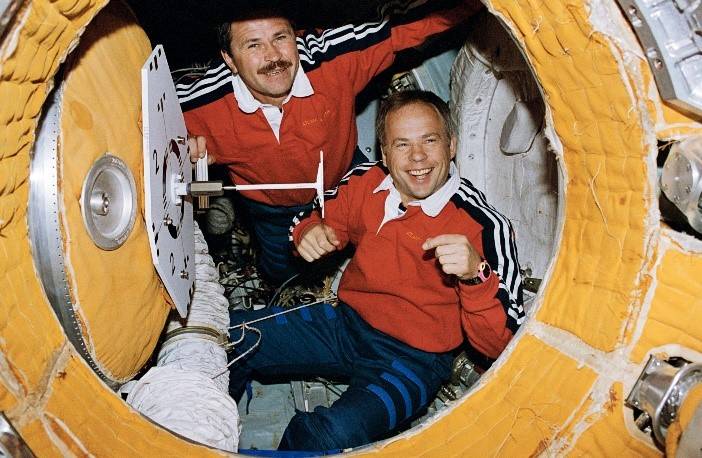
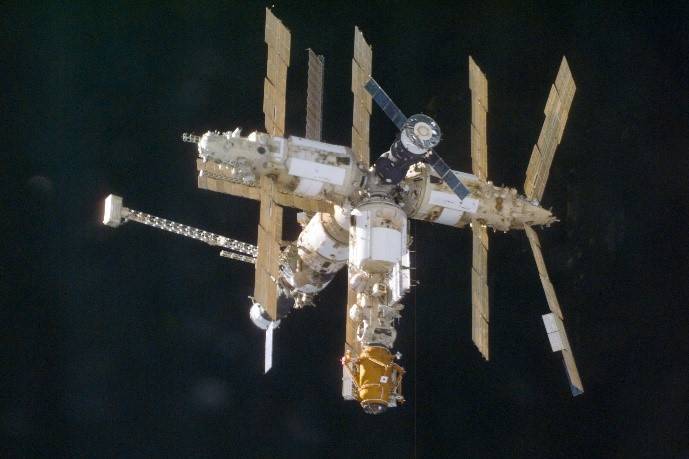
Left: Mir-19 crew of Budarin (left) and Solovyev just prior to hatch closure.
Right: View of the deployed Spektr solar array (at right), taken during
the STS-74 mission; compare with photo from STS-71, above.
Enjoy the crew narrate a video about their STS-71 mission.

